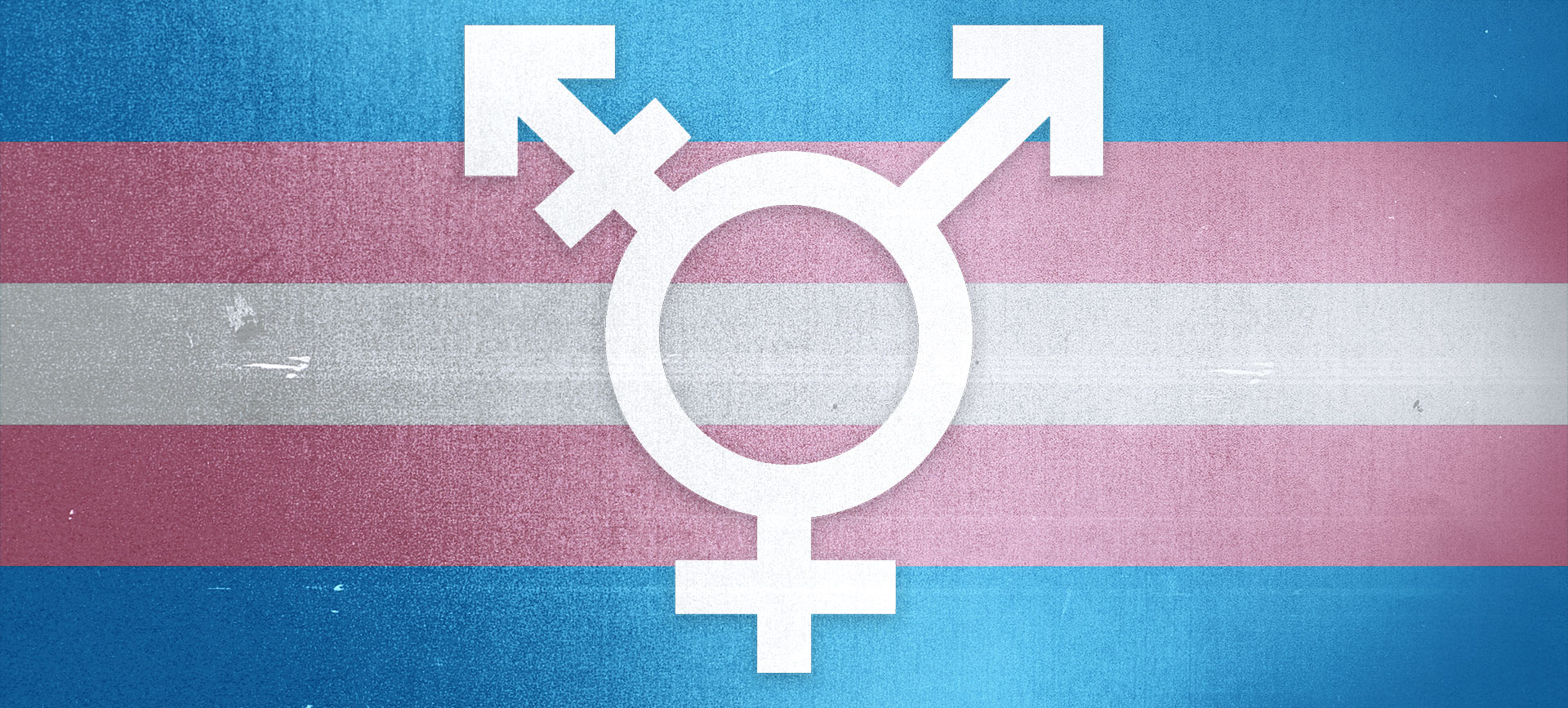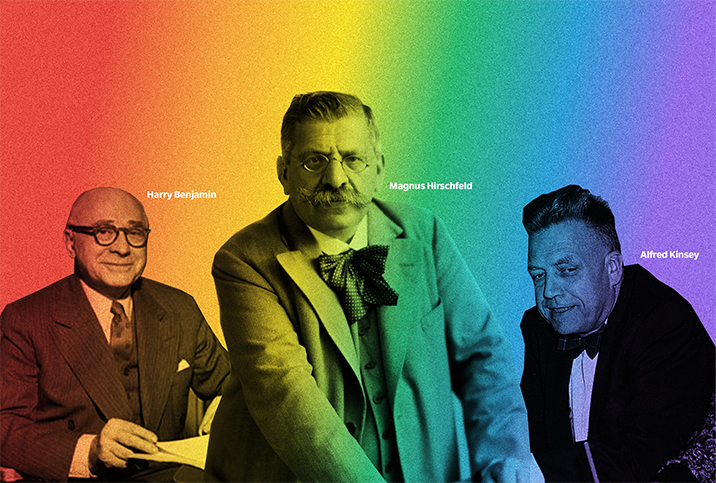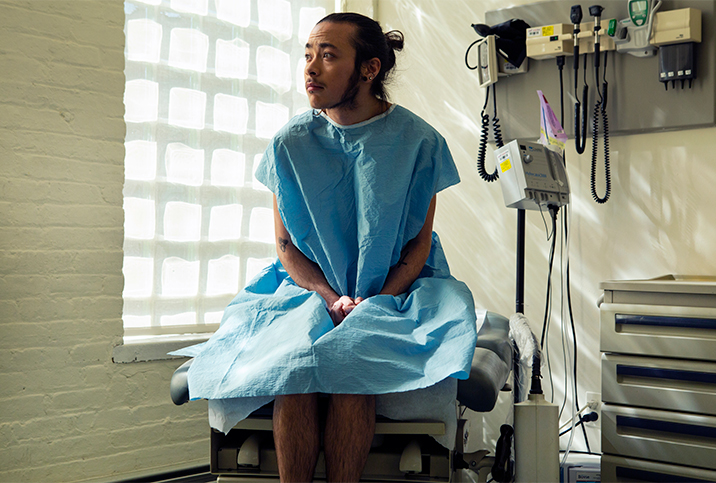Welcome to a collection of Giddy articles on LGBTQIA+ history. Each week we’ll talk about a different part of the community’s past, present and possible future. This week, a critical view of the LGBTQIA+ community’s access to health care through the years.


In 2016, more than 1.4 million Americans identified as transgender. Yet 1 in 5 transgender or non-binary individuals is refused medical care because of their gender identity. Sadly, this number reflects a vast improvement over the discrimination this group has faced in the medical system in recent decades.
"I have to brace myself when meeting a new doctor or pharmacist," said Aisling "Ash" Rowan (they/he), a non-binary author and artist. "It's stressful and a risk, because I never know how they will respond to things like a testosterone prescription on my file."

Let's take a look through the past century and remember the many people and events that led us here.
Magnus Hirschfeld
Largely regarded as a forefather of modern sexology and sexuality advocacy, sexologist Magnus Hirschfeld was born in Poland in 1868. By 1896, he had relocated to Berlin to study and advocate for sexual minorities. Hirschfeld was one of the first physicians to assert that sexual orientation was an innate characteristic and not a choice. He went on to create one of the first theories of sexual intermediaries, which accounted for sexual variations like intersex characteristics—then known as hermaphroditism—and transgender traits.
In 1919, Hirschfeld opened the Institute for Sexual Science, the work of which paved the way for many gender studies professionals more than a century later. While there, he performed what's seen as the first complete sex reassignment surgery on a trans woman named Dora Richter, in 1932. Hirschfeld is responsible for many of the terms we use to describe different gender orientations today and was one of the first to offer sex changes through hormones and surgeries at a time when other physicians saw variant gender identities as mental afflictions.
Members of the Nazi party burned the institute and many of its findings in 1933.
Despite this, Hirschfeld's affection for all people has endured. "Love is as varied as people are," he once said.
Harry Benjamin
German endocrinologist Harry Benjamin continued Hirschfeld's work in mid-20th century America, opening a private medical practice in New York in 1913.
Thirty-five years later, biologist and sexologist Alfred Kinsey referred a patient—who, while assigned male, identified as a woman—to Benjamin. Instead of taking the psychoanalytical approach typical of the time, Benjamin counseled the patient to travel to Europe for what was then considered sex reassignment surgery.
In 1966, he wrote "The Transsexual Phenomenon," which used his clinical work to distinguish transgender folks from transvestites and homosexuals. His work challenged the psychoanalytical approach of trying to make a patient's mind match their body.
"I have seen too many transsexual patients to let their picture and their suffering be obscured by uninformed albeit honest opposition," he wrote in his book. "Furthermore, I felt that after [50] years in the practice of medicine, and in the evening of life, I need not be too concerned with a disapproval that touches much more on morals than on science."
During the 1970s, Benjamin founded the Harry Benjamin International Gender Dysphoria Association (HBIGDA), which then created the first standards of care in 1979. The association would eventually become the World Professional Association for Transgender Health (WPATH).
Alfred Kinsey
Alfred Kinsey is one of the most famous names in the field of gender studies. A biologist and sexologist, Kinsey started by collecting almost 2,000 sex histories, which inspired him to found the Institute for Sex Research at Indiana University.
"As long as sex is dealt with in the current confusion of ignorance and sophistication, denial and indulgence, suppression and stimulation, punishment and exploitation, secrecy and display, it will be associated with a duplicity and indecency that lead neither to intellectual honesty nor human dignity," Kinsey wrote in his book "Sexual Behaviour in the Human Male."
Overall, the Institute went on to record more than 18,000 personal stories, which indicated a wide variety in human behavior and identity.
The first U.S. cases of AIDS were reported in June 1981. During the ensuing 40 years, 700,000 Americans have died of AIDS-related illness and, currently, 1.2 million people are living with HIV.
Trans women in the '80s felt this danger perhaps more than other groups. During that time, many had to turn to sex work to make ends meet. Because of this, they were put at higher risk of contracting HIV. But trans women who went into gay clinics for treatment were often turned away; if they sought care as women, they faced a similar struggle, because it was thought for a time that women couldn't contract HIV.
"Being trans, in general, involves so many bureaucratic and emotional and financial hoops to jump through," Rowan said. "At every junction, there's danger in disclosing details about your true self."
Trans women are still 49 times more likely to contract HIV than any other group—and that's after a significant decline in overall HIV transmission.
 Throughout the history of health care, being transgender has been classified as a mental illness. This was codified with the addition of Gender Identity Disorder to the Diagnostic and Statistical Manual of Mental Disorders (DSM) III in 1980.
Throughout the history of health care, being transgender has been classified as a mental illness. This was codified with the addition of Gender Identity Disorder to the Diagnostic and Statistical Manual of Mental Disorders (DSM) III in 1980.
Shockingly, it would take nearly 40 years before the World Health Organization declassified being transgender as a mental disorder. That means that up until 2019, many medical professionals would simply refer trans patients to therapists rather than grant them access to hormone treatments or surgeries.
Gender dysphoria—that is, the feeling of distress caused by not being physically aligned with one's gender identity—is still often required as a diagnosis by a psychiatric professional before gender-affirming care can be prescribed.
Transgender people have most of the same health concerns as cisgender individuals in that they still need regular checkups. However, people who have undergone hormone replacement therapy (HRT) need medical professionals to be aware of how their differing hormonal levels impact the rest of their treatment.
"Most of my medical treatment isn't explicitly related to my gender or transitioning," Rowan said. "But it's also all interconnected in ways that often aren't considered by doctors, by the population at large, etc."
About 31 percent of transgender Americans don't have access to regular health care and many don't seek out care because they're afraid of discrimination or being refused to be seen.
"I think it's telling that I'm surprised when providers do correctly address my gender," Rowan said. "Even within clinics or systems that allow me to list the right pronouns, every interaction is a toss-up as to whether the medical staff will actually be aware of, and then acknowledge, what's on my file."
Even so, there have been massive improvements in trans health care. Sean W Childers-Gray (he/him), a freelance graphic designer, has only had one major incident of discrimination in his history of medical care. Otherwise, his care has been largely positive.
"While my family practice doc doesn't provide HRT, she is so open and welcoming," Childers-Gray said. "She asks intelligent questions about how my transitional care might affect my general care.
"I also have the story about when I had my top surgery and the nurse actually harped on the anesthesiologist for the way he asked me if I might possibly be pregnant," Childers-Gray added. "She stuck up for me, pulling him out of the room as they prepped me for the procedure…she gave it to him. She was awesome."
Having affirming providers can make a huge difference in the quality of care. But sometimes that isn't quite enough.
"[Understand] providers can still be limited by outdated models of categorizing sex/gender," Rowan said.
Longstanding transphobia has placed a significant barrier around understanding what gender-affirming care truly does to other aspects of health, and the emotional labor involved in constant self-advocacy discourages trans patients from seeking adequate care. If you are a patient looking to better your healthcare experience, or a medical professional who is seeking advice on caring for trans clients, the American Academy of Family Physicians has compiled a list of resources.









